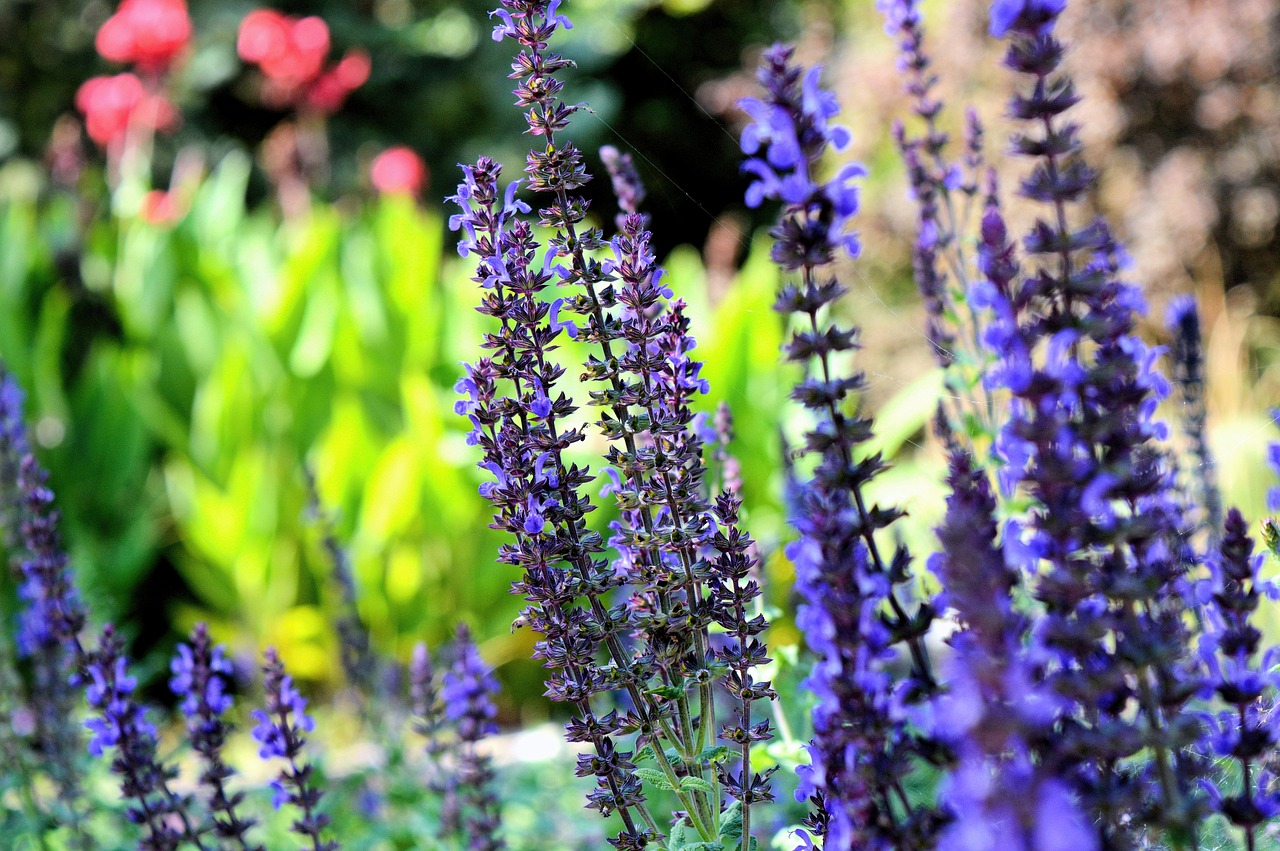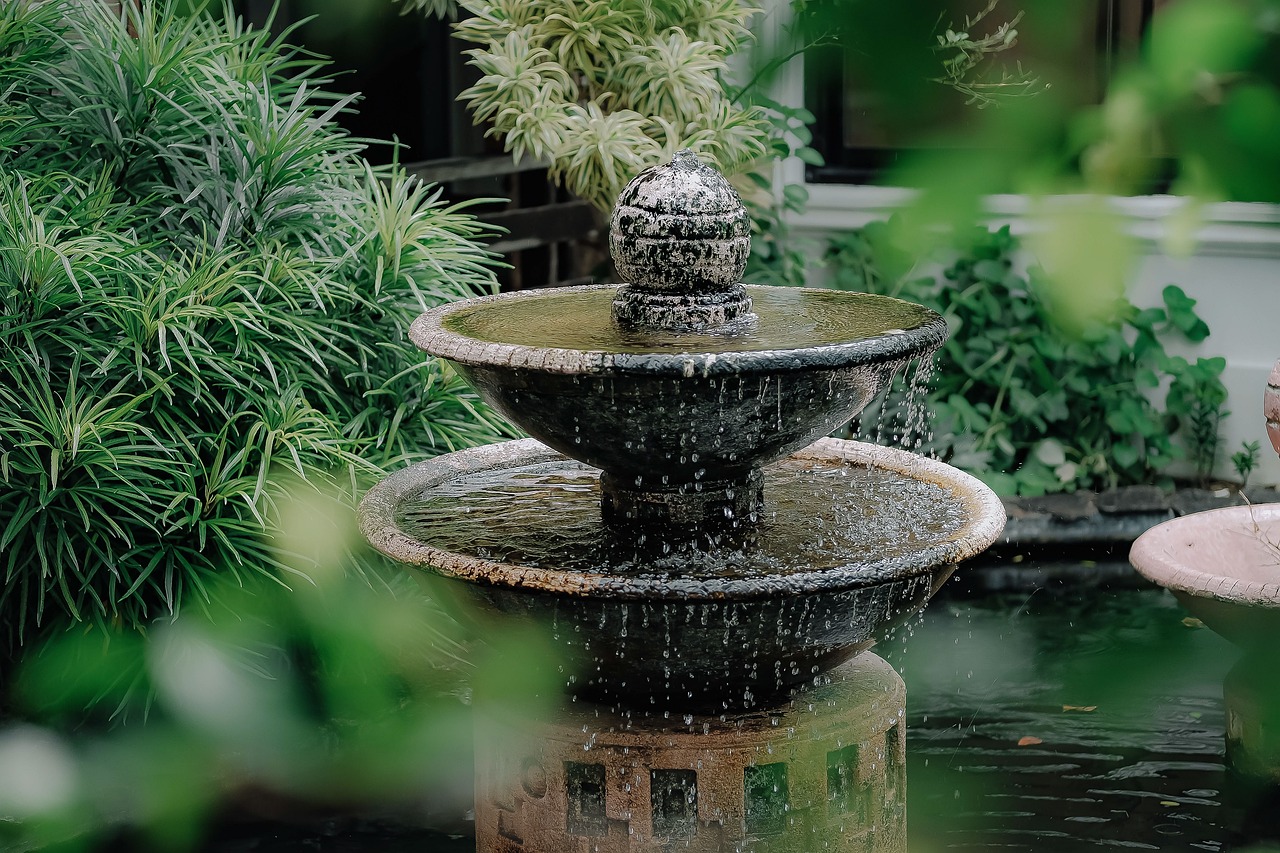How to Create a DIY Vertical Garden
Creating a DIY vertical garden is not just a trend; it's a way to bring a slice of nature into your home while maximizing space. Imagine transforming an ordinary wall into a lush, green masterpiece that not only beautifies your living area but also purifies the air you breathe. Vertical gardening is an innovative solution, especially for those with limited outdoor space, such as apartment dwellers or city residents. In this article, we will explore the steps, materials, and benefits of creating a vertical garden at home, providing practical tips for both beginners and experienced gardeners. So, are you ready to dig in and cultivate your green thumb?
Selecting an ideal spot for your vertical garden is crucial. Imagine your plants basking in the sun, soaking up the rays, and growing healthy and vibrant. Consider factors like sunlight, accessibility, and aesthetics to ensure your plants thrive and enhance your space. A south-facing wall is often the best choice, as it receives ample sunlight throughout the day. However, if your space lacks direct sunlight, don’t fret! Many plants flourish in partial shade. Also, think about how often you'll need to water and maintain your garden. A location that is easily accessible will make your gardening experience much more enjoyable.
Gathering the right materials is essential for a successful vertical garden. Picture this: you have all your tools laid out, ready to create something beautiful. This section outlines common supplies like containers, soil, and tools that will facilitate your gardening project. Here’s a quick rundown of what you might need:
- Containers: Hanging pots, wall-mounted planters, or repurposed pallets.
- Soil: A high-quality potting mix that retains moisture while allowing drainage.
- Tools: A trowel, watering can, and perhaps a drill for mounting.
With these materials in hand, you're all set to start your vertical garden journey!
When it comes to designing your vertical garden, the sky is the limit! You can explore various design concepts, from wall-mounted planters to freestanding structures. Think of your vertical garden as a piece of art; it should reflect your personality and style. You might want to create a geometric pattern with different plants or even a cascading waterfall effect with trailing vines. Creative designs can elevate your garden's visual appeal and functionality, making it a stunning focal point in your home.
Choosing the right plants is key to a thriving vertical garden. It's essential to consider factors like sunlight, climate, and maintenance requirements. For example, if your vertical garden is in a sunny spot, you might opt for sun-loving herbs like basil or vibrant flowers like petunias. On the other hand, if your space is shaded, consider ferns or shade-tolerant plants like hostas. Remember, the right plants will not only survive but thrive, creating a beautiful tapestry of colors and textures.
Now for the fun part—building your vertical garden! Follow these step-by-step instructions to construct your garden:
- Choose your structure: Decide whether you want a wall-mounted planter or a freestanding frame.
- Prepare your containers: Ensure they have drainage holes to prevent waterlogging.
- Fill your containers with potting mix: Leave some space at the top for watering.
- Plant your chosen flora: Arrange them according to their sunlight and water needs.
- Secure your structure: If wall-mounted, use the appropriate anchors to keep it stable.
With these steps, you'll have a thriving vertical garden in no time!
Proper watering and maintenance are vital for the longevity of your vertical garden. Think of watering as giving your plants a refreshing drink after a long day. Depending on your plant selection, watering needs may vary. A drip irrigation system can be a game-changer, allowing for consistent moisture without the hassle. Additionally, be sure to check for any dead leaves or pests regularly. Keeping your garden tidy not only looks great but also promotes plant health.
Every gardener faces challenges, and vertical gardening is no exception. Common issues include pests like aphids or diseases such as powdery mildew. But don't worry; there are practical solutions! For example, introducing beneficial insects like ladybugs can help control pests naturally. Regularly inspecting your plants and maintaining good airflow can prevent many diseases. Remember, gardening is a learning experience, and overcoming challenges is part of the fun!
Vertical gardening offers numerous advantages, including space efficiency and improved air quality. Imagine transforming a dull wall into a vibrant display of life! This gardening method can enhance your living environment by providing fresh herbs and vegetables right at your fingertips. Additionally, vertical gardens can help reduce urban heat, improve insulation, and even attract pollinators like bees and butterflies.
Explore examples of successful vertical gardens around the world. From the stunning green walls of Paris to the innovative urban gardens in Singapore, these inspiring projects can spark creativity and motivate you to start your own garden. Look online for photos and videos that showcase the beauty and ingenuity of vertical gardening. Who knows? You might just find the perfect design that speaks to you!
Q: How much sunlight do vertical gardens need?
A: Most plants thrive in at least 6 hours of sunlight, but some can do well in partial shade. Choose plants based on your garden's light conditions.
Q: Can I grow vegetables in a vertical garden?
A: Absolutely! Many vegetables, like tomatoes and cucumbers, can be grown vertically. Just ensure they have enough support as they grow.
Q: How often should I water my vertical garden?
A: Watering frequency depends on the plants and climate, but generally, check the soil moisture every few days and water as needed.

Choosing the Right Location
When it comes to creating a stunning vertical garden, is like picking the perfect canvas for an artist. Imagine your plants basking in the sunlight, their colors vibrant and inviting. The first thing to consider is sunlight. Most plants need at least 6 hours of sunlight a day, so scout out areas that receive ample light. Look for spots near windows, balconies, or even walls that face the sun. If your home is shaded by trees or buildings, don’t fret! There are plenty of plants that thrive in partial shade, too.
Next up is accessibility. You want your vertical garden to be a place of joy and ease, not a chore. Think about how often you'll need to water, prune, or harvest. Is the location easy to reach? If you have to climb a ladder every time you want to tend to your plants, you might find yourself avoiding it altogether. Instead, choose a spot where you can easily interact with your garden. This will not only make maintenance easier but also encourage you to enjoy the beauty of your plants more often.
Don’t forget about aesthetics! Your vertical garden should be a visual delight, complementing your home’s decor. Consider how the colors and textures of your plants will look against the backdrop of your wall or fence. If you have a neutral-colored wall, vibrant flowers can add a pop of color, while lush green foliage can create a serene, calming effect. Take a moment to visualize how your garden will transform the space and choose a location that enhances your home’s overall appeal.
Lastly, think about the environmental factors. Is the area sheltered from harsh winds or heavy rains? Wind can damage delicate plants, while excessive rain can lead to waterlogging. If your chosen spot has these challenges, consider using barriers or selecting more resilient plant varieties. You might also want to think about how the direction of the wind flows in your area. A wall can act as a windbreak, providing a safe haven for your plants to flourish.
In summary, when selecting the ideal location for your vertical garden, keep these key points in mind:
- Sunlight: Ensure your plants get enough light.
- Accessibility: Choose a spot that’s easy to reach.
- Aesthetics: Consider how it will look against your home.
- Environmental Factors: Protect plants from wind and rain.
By paying attention to these factors, you’re setting the stage for a thriving vertical garden that not only looks beautiful but also brings joy and satisfaction. Remember, the right location can make all the difference in the success of your gardening adventure!

Materials Needed
Creating a vertical garden is an exciting project that can transform any space, but to get started, you need to gather the right materials. Think of this as assembling your gardening toolkit—each item plays a critical role in ensuring your plants thrive. First and foremost, you'll need containers. These can range from traditional pots to repurposed items like wooden crates or even old pallets. The beauty of vertical gardening is that you can be as creative as you want!
Next on the list is potting soil. Not just any soil will do; you’ll want a high-quality, well-draining mix that allows your plants' roots to breathe while retaining enough moisture. This is where your plants will find their nutrients, so don't skimp on quality!
As you gather your materials, don’t forget about tools. Basic gardening tools like trowels, scissors, and gloves are essential for planting and maintenance. A watering can or a hose with a spray nozzle will also come in handy for keeping your plants hydrated. If you're going for a more elaborate setup, you might consider investing in a drip irrigation system to make watering hassle-free.
Another critical component is support structures. Depending on your design, you may need trellises, hooks, or even a sturdy frame to hold your vertical garden in place. These supports not only help your plants grow upwards but also add an aesthetic element to your garden.
If you’re feeling adventurous, you can also incorporate fertilizers and plant food into your materials list. These will provide your plants with the extra nutrients they need to flourish, especially when growing in a limited amount of soil. Remember, a little goes a long way, so choose organic options whenever possible to keep your garden healthy.
Finally, don't forget about the plants themselves! Selecting the right varieties is crucial, but we’ll delve into that in the next section. For now, here’s a quick summary of the essential materials needed for your vertical garden:
| Material | Purpose |
|---|---|
| Containers | Holds the plants and soil. |
| Potting Soil | Provides nutrients and support for plant roots. |
| Gardening Tools | Facilitates planting and maintenance. |
| Support Structures | Helps plants grow vertically and provides stability. |
| Fertilizers | Enhances plant growth with additional nutrients. |
By gathering these materials, you're setting the stage for a successful vertical garden that not only looks stunning but also thrives in its environment. So, are you ready to roll up your sleeves and dig in? The adventure of vertical gardening awaits!

Design Ideas
When it comes to creating a vertical garden, the design possibilities are as limitless as your imagination! From sleek modern aesthetics to rustic charm, your vertical garden can be a true reflection of your personal style. One of the most popular options is the wall-mounted planter. This design not only maximizes space but also transforms a plain wall into a vibrant canvas of greenery. Imagine stepping into your backyard or balcony and being greeted by a stunning array of colorful flowers and lush foliage cascading down the wall—it's like having a living piece of art!
Another fantastic design idea is the use of freestanding structures. These can be as simple as a tiered shelf or as elaborate as a custom-built frame. Freestanding vertical gardens allow you to create a stunning focal point in your garden or patio. You can easily move them around to find the perfect spot that catches the sunlight just right. Plus, they can be a great option if you’re renting and can’t make permanent changes to your living space.
If you're feeling a bit adventurous, consider creating a vertical garden with repurposed materials. Old wooden pallets, for instance, can be transformed into a charming planter. Just imagine a rustic pallet filled with herbs, flowers, or even succulents, adding both character and functionality to your garden. This not only saves money but also contributes to sustainability, giving new life to items that might otherwise end up in a landfill.
Vertical gardens can also serve as functional designs. For example, a vertical herb garden can be a delightful addition to your kitchen. By placing a vertical planter near a window, you can have fresh herbs at your fingertips while cooking. This not only enhances your culinary creations but also adds a fresh aroma to your kitchen space.
Moreover, don't shy away from mixing materials and textures in your design. Combining wood, metal, and even fabric can create a visually interesting and unique vertical garden. For instance, you could use metal grids to support climbing plants while incorporating wooden boxes for flowers or herbs. The contrast between the materials can elevate the overall look of your garden, making it not just a garden but a statement piece.
Finally, lighting plays a crucial role in the design of your vertical garden. Consider adding LED lights to highlight your plants at night, creating a magical atmosphere that draws attention to your garden even after the sun sets. This can transform your outdoor space into an enchanting retreat, perfect for evening gatherings or quiet relaxation.
In summary, the design of your vertical garden can be as creative and unique as you want it to be. Whether you choose wall-mounted planters, freestanding structures, or even repurposed materials, the key is to ensure that your garden reflects your personality and complements your living space. Don't forget to consider functionality and aesthetics together; after all, a beautiful garden should also serve a purpose!
Q: What types of plants work best for vertical gardens?
A: The best plants for vertical gardens are those that thrive in limited space and can tolerate vertical growth. Herbs, succulents, and trailing plants like ivy or pothos are excellent choices.
Q: How much sunlight do vertical gardens need?
A: Most vertical gardens require at least 6 hours of sunlight daily. However, this can vary based on the plants you choose, so it's essential to research the specific needs of your plants.
Q: Can I create a vertical garden indoors?
A: Absolutely! Indoor vertical gardens are a fantastic way to bring nature inside. Just make sure to choose plants that thrive in lower light conditions and ensure they have adequate drainage.
Q: How do I maintain a vertical garden?
A: Regular watering, pruning, and monitoring for pests are crucial for maintaining a vertical garden. Depending on the plants, you might also need to fertilize periodically.
Q: What are the benefits of having a vertical garden?
A: Vertical gardens save space, improve air quality, and can enhance the aesthetic appeal of your home. They also provide a unique way to grow your own food or create a relaxing environment.

Plant Selection
Choosing the right plants for your vertical garden can feel like picking the perfect outfit for a big event—it's all about finding the right fit! The plants you select will not only determine the overall aesthetics of your garden but also its health and longevity. So, how do you make the best choices? First, consider the sunlight conditions of your chosen location. Are you working with a sun-drenched balcony or a shaded patio? Different plants thrive in different light conditions, so it’s essential to match them with the right environment.
For instance, if your vertical garden will bask in full sun, you might want to opt for sun-loving plants like succulents, herbs, or flowering plants such as petunias. On the other hand, if the area is mostly shaded, consider shade-tolerant options like ferns, ivy, or even certain types of lettuce that can flourish without direct sunlight.
Next, think about your climate. Are you in a humid area, or is it dry and arid? Some plants, like aloe vera, thrive in dry conditions, while others, such as caladiums, prefer a more humid environment. Understanding your local climate will help you select plants that will not only survive but thrive in your vertical garden.
Maintenance requirements are another crucial factor. If you're a busy bee with little time to spare, you might want to choose low-maintenance plants that require minimal care. Plants like pothos or snake plants are fantastic choices because they can tolerate neglect and still look fabulous. On the flip side, if you have a green thumb and love spending time in your garden, you might enjoy the challenge of caring for more demanding plants.
To help you get started, here’s a quick reference table of popular vertical garden plants along with their sunlight and maintenance needs:
| Plant Name | Sunlight Requirements | Maintenance Level |
|---|---|---|
| Succulents | Full Sun | Low |
| Pothos | Low to Bright Indirect Light | Low |
| Ferns | Partial Shade | Medium |
| Herbs (Basil, Mint) | Full Sun | Medium |
| Caladiums | Partial Shade | Medium |
Finally, don't forget to think about the visual appeal of your vertical garden! Mixing different plants can create a stunning tapestry of colors and textures. You can even incorporate trailing plants that spill over the edges of your vertical garden, adding a beautiful cascading effect. The key is to have fun with your selections and create a space that reflects your personality and style.
In conclusion, selecting the right plants for your vertical garden involves considering factors like sunlight, climate, and maintenance. With a little thought and creativity, you can create a thriving vertical garden that not only beautifies your space but also brings you joy and satisfaction. So, roll up your sleeves and get ready to dig into the exciting world of vertical gardening!

Building Your Vertical Garden
Building a vertical garden may seem daunting at first, but with the right approach, it can be an incredibly rewarding project. Imagine transforming a bare wall into a lush, green oasis that not only beautifies your space but also provides fresh herbs or flowers at your fingertips. To get started, you’ll need to gather your materials and plan your design carefully. The first step is to choose a sturdy frame or structure that can support the weight of the plants and soil. Options include wooden pallets, trellises, or even repurposed wooden crates. Each option has its unique charm, so pick one that resonates with your style!
Once you have your structure in place, the next step is to prepare the containers or planting pockets. Depending on your design, you might use wall-mounted planters or hanging pots. Ensure that whatever you choose has adequate drainage to prevent water from pooling, which can lead to root rot. You can line your containers with landscape fabric to keep the soil in while allowing excess water to escape.
Now, let’s talk about soil. A good potting mix is essential for the health of your plants. You want a mix that retains moisture but also drains well. Consider adding some organic compost to enrich the soil. This will provide your plants with the nutrients they need to thrive. If you’re feeling adventurous, you might even want to explore hydroponic systems, which allow plants to grow in a nutrient-rich water solution without soil!
When it comes to securing your plants, you have a few options. You can either plant directly into the containers or use a layering technique, where you place larger plants at the bottom and smaller ones at the top. This not only maximizes space but also creates a beautiful cascading effect. As you plant, remember to leave some space between plants to allow for growth and air circulation. It's crucial to consider the height and spread of your chosen plants to avoid overcrowding.
After planting, the next step is to ensure that your vertical garden is stable. If you’re using a freestanding structure, make sure it’s anchored securely to prevent it from tipping over. For wall-mounted gardens, use appropriate brackets and anchors to ensure it can support the weight of the soil and plants. Safety first, right?
Finally, don’t forget about the finishing touches! Adding decorative elements like fairy lights or garden ornaments can enhance the aesthetic appeal of your vertical garden. Plus, it makes for a charming evening atmosphere. Once everything is set up, step back and admire your handiwork. You’ve just created a vertical garden that’s not only functional but also a stunning focal point in your home!
- How much sunlight does a vertical garden need? Most plants thrive in 6-8 hours of sunlight daily, so choose a location accordingly.
- Can I grow vegetables in a vertical garden? Absolutely! Many vegetables like lettuce, herbs, and strawberries do well in vertical setups.
- How often should I water my vertical garden? It depends on the plants and the climate, but generally, check the soil moisture regularly and water as needed.
- What should I do if my plants are not thriving? Assess their light, water, and soil conditions. You may need to adjust their care routine or consider different plant types.

Watering and Maintenance
Maintaining a vertical garden is a bit like nurturing a child; it requires regular attention, love, and a bit of know-how. The key to a thriving vertical garden lies in understanding the specific watering needs of your plants. Overwatering can be just as detrimental as underwatering, so finding that sweet spot is crucial. First, consider the type of plants you’ve chosen: some may thrive on a light misting, while others might prefer a deep soak. Generally, a good rule of thumb is to check the soil moisture at least once a week. If the top inch feels dry, it’s time to water!
Another essential factor to consider is the method of irrigation. You can opt for traditional watering cans, but if you’re looking for efficiency, a drip irrigation system might be the way to go. This method delivers water directly to the roots, minimizing waste and ensuring your plants receive the right amount of moisture. Plus, it saves you time—who doesn’t want that?
When it comes to maintenance, regular pruning is vital. Just like a haircut can refresh your look, trimming back overgrown plants can keep your vertical garden looking its best. Aim to remove dead leaves and spent flowers to encourage new growth. Additionally, keep an eye out for pests. Aphids, spider mites, and mealybugs are common culprits that can wreak havoc on your garden. If you notice any unwanted guests, don’t panic! A simple solution is to spray your plants with a mixture of water and mild soap, which can help eliminate these pests without harming your plants.
Another key aspect of maintenance is fertilization. Your vertical garden needs nutrients to flourish, especially if you’re growing edibles. A balanced, slow-release fertilizer can work wonders. Apply it according to the specific needs of your plants, usually every few weeks during the growing season. Remember, a little goes a long way; over-fertilizing can lead to more harm than good!
Lastly, consider the changing seasons. As temperatures fluctuate, your plants' needs may change. During hotter months, you might need to water more frequently, while in cooler months, you may cut back. Always observe your plants; they’re the best indicators of what they need.
In summary, successful watering and maintenance of your vertical garden involve:
- Regularly checking soil moisture
- Choosing an efficient irrigation method
- Pruning and removing dead foliage
- Monitoring for pests and diseases
- Fertilizing appropriately
- Adapting to seasonal changes
By following these guidelines, you’ll ensure that your vertical garden not only survives but thrives, bringing beauty and joy to your living space.
1. How often should I water my vertical garden?
The frequency of watering depends on the type of plants you have and the climate. Generally, check the top inch of soil; if it's dry, it's time to water.
2. Can I use regular garden soil in my vertical garden?
It's best to use a lightweight potting mix designed for container gardening. This ensures proper drainage and aeration for your plants.
3. What should I do if I notice pests on my plants?
Try spraying the affected plants with a mixture of water and mild soap to remove pests. If the problem persists, consider using organic insecticides.
4. Is it necessary to fertilize my vertical garden?
Yes, fertilization is important, especially for edible plants. Use a balanced, slow-release fertilizer every few weeks during the growing season.
5. How can I protect my vertical garden from extreme weather?
During extreme heat or cold, consider moving your vertical garden to a shaded area or using protective covers to shield it from harsh conditions.

Common Problems and Solutions
Gardening, especially vertical gardening, can sometimes feel like navigating a maze. Just when you think you've got everything under control, an unexpected issue pops up. But don't worry! Every gardener faces challenges, and understanding these common problems can help you tackle them head-on. Let's dive into some frequent issues you might encounter and explore practical solutions to keep your vertical garden thriving.
One of the most common problems in vertical gardening is pest infestations. Aphids, spider mites, and whiteflies can wreak havoc on your plants. To combat these pesky intruders, consider using natural remedies like insecticidal soap or neem oil. These solutions are not only effective but also eco-friendly, ensuring you protect your plants without harming the environment.
Another issue that many vertical gardeners face is insufficient sunlight. Since vertical gardens are often placed against walls, certain areas may not receive adequate light. To remedy this, observe how sunlight moves across your garden throughout the day. If you notice some plants are struggling, try relocating them to a sunnier spot or consider using reflective materials to enhance light exposure. Additionally, you can opt for shade-tolerant plants that thrive in lower light conditions.
Overwatering is a sneaky problem that can lead to root rot. It’s crucial to understand your plants’ watering needs. A good rule of thumb is to check the soil moisture before watering. If the top inch of soil feels dry, it’s time to water. To prevent overwatering, ensure your vertical garden has proper drainage. You might even want to install drip irrigation systems, which can help maintain consistent moisture levels without the risk of drowning your plants.
Sometimes, plants in vertical gardens can suffer from nutrient deficiencies. If you notice yellowing leaves or stunted growth, it might be time to fertilize. Use a balanced, slow-release fertilizer to provide essential nutrients. Additionally, consider incorporating compost into your soil mix to boost its nutrient content naturally. Regularly monitoring your plants will help you catch these deficiencies early and keep them healthy.
Lastly, let’s talk about disease management. Fungal infections and bacterial diseases can spread quickly in vertical gardens due to humidity and close plant spacing. To prevent these issues, ensure good air circulation around your plants. Pruning overcrowded areas can help reduce humidity and promote airflow. If you do encounter diseases, remove affected plants immediately and apply appropriate treatments, such as fungicides, to prevent the spread.
In summary, while vertical gardening can present its fair share of challenges, being aware of these common problems and knowing how to address them will empower you as a gardener. Remember, every issue has a solution, and with a little patience and creativity, you can cultivate a thriving vertical garden that brings beauty and joy to your space.
- What should I do if my plants are wilting? Check for signs of over or underwatering and adjust your watering schedule accordingly.
- How can I prevent pests in my vertical garden? Regularly inspect your plants and consider using natural pest repellents to keep infestations at bay.
- Is it necessary to use fertilizers? Yes, fertilizers can help replenish nutrients in the soil and support healthy plant growth.
- Can I grow vegetables in a vertical garden? Absolutely! Many vegetables thrive in vertical setups, just ensure they receive enough sunlight and support.

Benefits of Vertical Gardening
Vertical gardening is not just a trend; it’s a revolution in how we think about gardening and utilizing space. Imagine transforming a dull wall into a lush, green paradise that not only beautifies your living space but also offers a plethora of benefits. Whether you’re in a cramped apartment or have a spacious backyard, vertical gardens can fit into any environment, making them incredibly versatile. Here are some compelling reasons to consider starting your vertical garden today:
Space Efficiency: One of the most significant advantages of vertical gardening is its ability to maximize space. In urban settings, where square footage is limited, vertical gardens allow you to grow a variety of plants without taking up valuable ground space. Instead of sprawling out, your plants can climb up, creating a stunning visual effect while optimizing every inch of your area.
Improved Air Quality: Plants are nature's air purifiers, and vertical gardens can significantly enhance the air quality in your home. By absorbing carbon dioxide and releasing oxygen, they help purify the air. Some plants even filter out toxins, making your indoor environment healthier. Imagine breathing in fresher air while surrounded by greenery—it's like having a mini-forest right in your home!
Temperature Regulation: Vertical gardens can also help regulate temperatures in and around your home. They provide natural insulation, keeping your space cooler in the summer and warmer in the winter. This can lead to reduced energy costs, as you may find yourself relying less on heating and cooling systems.
Enhanced Aesthetics: Let’s face it; a vertical garden is a showstopper! It adds a unique aesthetic appeal to any space. Whether you choose vibrant flowers, lush herbs, or even edible plants, a vertical garden can serve as a stunning focal point. It’s like turning a blank canvas into a vibrant masterpiece that changes with the seasons.
Accessibility: For those who may have difficulty bending down or kneeling, vertical gardens provide an accessible way to enjoy gardening. By elevating plants to eye level, you can tend to your garden without straining your back or knees. It’s a great way to make gardening inclusive for everyone, regardless of physical ability.
Food Production: Imagine plucking fresh herbs or vegetables right from your wall! Vertical gardens can also be a fantastic solution for growing your own food. You can easily cultivate herbs, salad greens, and even small fruits, which can save you money and provide you with fresh produce right at your fingertips. Plus, there’s something incredibly satisfying about eating food you’ve grown yourself.
Encourages Biodiversity: Vertical gardens can attract a variety of beneficial insects, such as bees and butterflies, which are essential for pollination. By creating a vertical garden, you’re not just enhancing your space; you’re also contributing to local biodiversity and supporting the ecosystem.
In summary, vertical gardening is more than just a way to grow plants; it’s a lifestyle choice that brings numerous benefits to your home and environment. From improving air quality to enhancing aesthetics and encouraging biodiversity, the advantages are plentiful. So, why not take that leap and start your own vertical garden today? You might just find it to be one of the most rewarding projects you’ve ever undertaken!
- What types of plants are best for vertical gardens?
It depends on your climate and sunlight conditions, but popular choices include ferns, succulents, herbs, and flowering plants.
- How much sunlight do vertical gardens need?
Most plants thrive in 6-8 hours of sunlight daily, but some shade-loving plants can also do well in less direct light.
- How do I water a vertical garden?
Consider using drip irrigation or self-watering systems to ensure consistent moisture without overwatering.
- Can I grow vegetables in a vertical garden?
Absolutely! Many vegetables, like tomatoes, peppers, and lettuce, can thrive in vertical gardens.

Inspiration from Successful Vertical Gardens
If you’re looking for a spark of creativity to ignite your vertical gardening journey, you’re in the right place! Vertical gardens have taken the world by storm, transforming dull walls into vibrant green canvases that breathe life into urban spaces. From the bustling streets of Paris to the serene gardens of Tokyo, these vertical masterpieces are not only visually stunning but also functional. Imagine walking through a city and being greeted by a lush wall of greenery, flowers, and even vegetables! It’s like stepping into a living artwork.
One of the most iconic examples is the Green Wall at the Musée du Quai Branly in Paris, designed by the renowned botanist Patrick Blanc. This vertical garden features over 15,000 plants from various species, creating a breathtaking backdrop that changes with the seasons. The colors and textures of the plants are so captivating that visitors often find themselves lost in the beauty of nature right in the heart of the city.
Another inspiring project is the vertical garden at the Hotel Indigo in Los Angeles. This hotel has embraced the concept of sustainability by incorporating a stunning vertical garden that not only enhances its aesthetic appeal but also improves air quality. The garden features a mix of native plants that require minimal water, showcasing how vertical gardens can be both beautiful and environmentally friendly.
Let’s not forget about the vertical farms popping up in urban settings, such as the ones in Singapore. These farms utilize innovative hydroponic systems to grow fresh produce vertically, making efficient use of limited space. It’s a perfect example of how vertical gardening is revolutionizing the way we think about food production in cities. Imagine picking fresh basil or lettuce from your own vertical garden right in your kitchen!
Inspiration can also come from smaller, more personal projects. Many home gardeners have turned their balconies and patios into lush vertical gardens using repurposed materials. For instance, old wooden pallets can be transformed into charming plant holders, creating a rustic look that adds character to any space. The beauty of vertical gardening lies in its versatility; you can adapt it to fit any style, whether modern, traditional, or eclectic.
As you contemplate your own vertical garden, think about what inspires you. Is it the vibrant colors of flowers, the lush greenery of foliage, or perhaps the idea of growing your own herbs and vegetables? The possibilities are endless, and the only limit is your imagination. Don’t hesitate to take cues from these successful projects. They serve as a reminder that a vertical garden can be a statement piece, a sustainable solution, or simply a way to bring a little nature into your life.
To help you visualize your own vertical garden, here’s a simple table showcasing various design elements you might consider:
| Design Element | Description |
|---|---|
| Wall-mounted Planters | Perfect for small spaces; attach planters directly to walls. |
| Freestanding Structures | Use trellises or frames to create a standalone garden. |
| Pallet Gardens | Repurpose old pallets for a rustic, DIY vertical garden. |
| Hanging Gardens | Utilize hanging pots to create a cascading effect. |
As you draw inspiration from these successful vertical gardens, remember that your garden should reflect your personality and style. Whether you opt for a large-scale installation or a small DIY project, the joy of watching your plants grow and thrive is what truly makes vertical gardening worthwhile.
Q: What types of plants are best for vertical gardens?
A: The best plants for vertical gardens include herbs like basil and mint, flowering plants such as petunias, and even small vegetables like cherry tomatoes. Choose plants that thrive in your climate and lighting conditions.
Q: How do I water my vertical garden?
A: Drip irrigation systems are highly effective for vertical gardens, allowing for consistent watering without over-saturating the plants. You can also use a spray bottle for smaller gardens.
Q: Can I create a vertical garden indoors?
A: Absolutely! Many indoor plants thrive in vertical gardens, especially those that enjoy indirect sunlight. Consider using lightweight containers and ensure proper drainage.
Q: How do I maintain a vertical garden?
A: Regular maintenance includes watering, pruning, and checking for pests. A well-planned vertical garden should be easy to care for, making it a rewarding addition to your home.
Frequently Asked Questions
- What is a vertical garden?
A vertical garden is a gardening method where plants are grown in a vertical space, often using wall-mounted planters or freestanding structures. This technique maximizes space, making it perfect for small areas or urban settings.
- Where should I place my vertical garden?
Choosing the right location is vital! Look for a spot that receives adequate sunlight, has easy access for maintenance, and complements your home’s aesthetics. South-facing walls are often ideal for sunlight-loving plants.
- What materials do I need to start a vertical garden?
You’ll need containers, potting soil, a watering system, and tools like scissors and a drill. Depending on your design, you might also require hooks, trellises, or shelves to hold your plants in place.
- How do I choose the right plants for my vertical garden?
Consider your climate, the amount of sunlight the area gets, and how much maintenance you’re willing to do. Herbs, succulents, and flowering plants are popular choices, but make sure to pick plants that thrive together.
- What are some common issues I might face with a vertical garden?
Common problems include pests, diseases, and inadequate watering. Regularly check your plants for signs of trouble and be proactive about pest control and disease management to keep your garden thriving.
- How often should I water my vertical garden?
Watering frequency depends on your plant types and the climate. Generally, you should check the soil moisture regularly. A drip irrigation system can help ensure consistent watering without over-saturating your plants.
- What are the benefits of having a vertical garden?
Vertical gardens save space, improve air quality, and add beauty to your environment. They can also reduce noise pollution and provide fresh herbs and vegetables right at your fingertips!
- Can I grow vegetables in a vertical garden?
Absolutely! Many vegetables, like lettuce, strawberries, and herbs, thrive in vertical gardens. Just make sure you choose varieties that are suitable for the space and provide them with enough support.
- Are there any design ideas for vertical gardens?
Definitely! You can use wall-mounted planters, pallets, or even repurposed materials like old shoe organizers. The key is to be creative and find a design that fits your space and style.



















